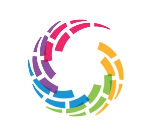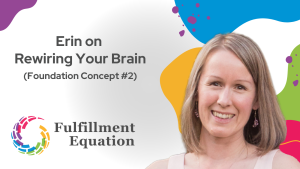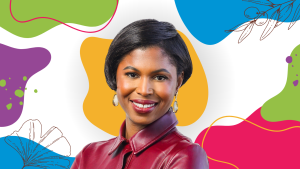It’s funny how the biggest, most revolutionary changes can begin with the smallest, seemingly insignificant whisper of an event. In this case, the turning point was the moment I first caught sight of a small bubble in the fabric on the seat of one of our dining room chairs. It was so subtle that it was almost imperceivable. Yet there it was. I blinked hard, hoping that I wasn’t seeing it properly, hoping that it would go away. It did not.
Leaning in to get a closer look at the offending imperfection, I could see that the top of the material was lifting apart from itself like a blister on your skin. It was immediately clear what was happening and, as my heart sank, the future played out in my head like a fast forward reel – the bubble would grow larger, eventually it would tear and start to peel, other bubbles would emerge on other chairs, soon the whole dining room set would be ruined. Oh no!
Let’s pause for a moment here to appreciate how inane this all is. No one is hurt or dying. These are chairs! However, that’s what makes it so interesting – that this unexpected, random moment could turn out to be the one that marks a life-changing turning point.
Coming back to the story and my dramatic visions of the dining room set massacre, sure enough, this is what actually happened. One by one, all the chairs started to bubble, tear and fall apart.
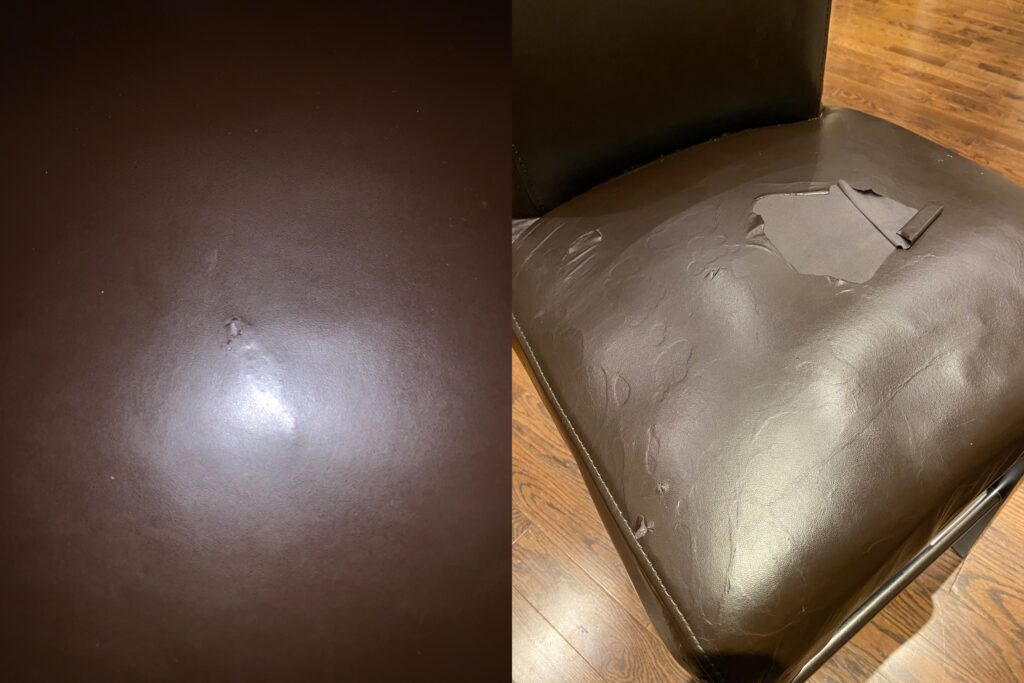
Rewinding back to that very first moment of shocking discovery, the feelings I remember most are anger and confusion. We had had our fair share of cheap or second hand furniture to this point and it had always served us well, but this was different. This dining room set was the practical expression of all of our hard efforts to that point in our lives. We had finally worked our way over many years from an apartment to our first home to our forever home. I then combined our own hard-earned money with some money I had received from my Gran (a one-time gift while she was still alive) to purchase this dining room set from a high-end, local furniture store. It was supposed to honour her memory when she was gone. It was supposed to last a lifetime. Heck, it was supposed to be leather!
The realizations flooded in as swiftly as that bubble grew. They ranged from disbelief on the practical (“so now I need to work a ton more to save for a new dining room set that I thought I already had?”) to full-blown existential crisis (“what is the point of this all?”). These thoughts questioned my entire upbringing because I had always admired my parents for how they took such great care of their things and made them last (“why did this happen if I was careful never to use a wet cloth to wipe the chairs?”) I wrestled with trying to understand why the disappointment so greatly outweighed any feelings of happiness I’d ever had with the dining room set. I felt a sense of regret having not used the money instead to fly out with my kids and visit my Gran while she was still alive. Mostly, this relatively ridiculous and simple event became the end of the relationship I had with the conventional philosophy of work hard (on others’ terms), perform, earn, achieve, acquire.
Along with the experience of the dining room chairs, other mini-revolutions since then have led to a journey of curiosity and discovery with the goal of better understanding how we find long-lasting fulfillment. At a day-to-day level, the practice of your Unique Equation helps to design and appreciate moments of joy happening in the present – I call this “grounded fulfillment”. With a longer-term perspective, the practice of identifying and pursuing your Personal Strategy provides the hopeful momentum and guiding direction for moving forward – I call this “active fulfillment”. When you are able to engage in both simultaneously, it transforms into long-lasting fulfillment.
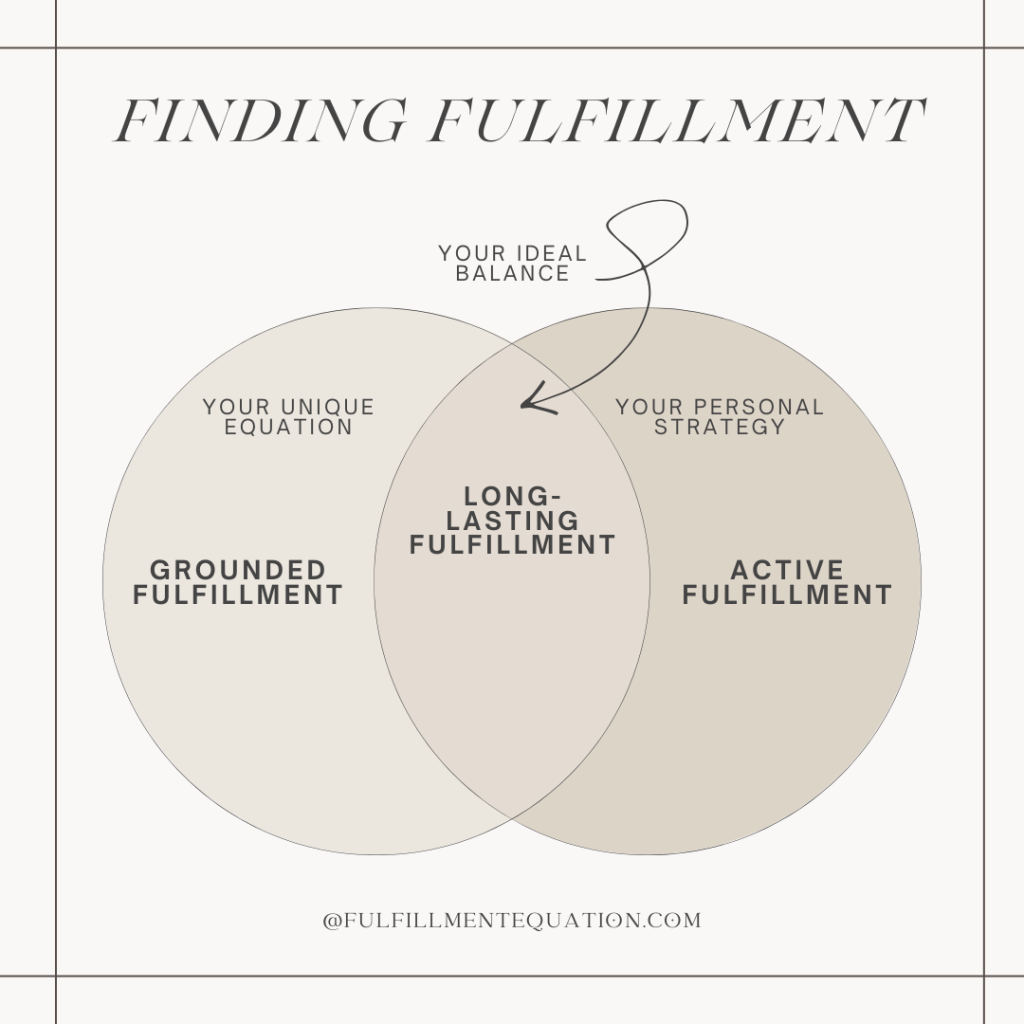
Overall, there are some fundamental concepts that form the strong foundation necessary to support long-lasting fulfillment. These represent the philosophy and mindset required for the grounded and active practice to be successful. More simply, they are the concepts needed to stop doing and start living! This is an initial list and will likely evolve as the journey progresses. Here is a summary of what I’ve discovered so far. We will dive deeper together into each one over time.
- Happiness vs. Fulfillment
- Rewiring Your Brain
- Finding Freedom
- Chasing Adventure
- Embracing Feeling & Intuition
- Engaging in Creativity & Solitude
- Pursuing Purpose
- Staying Healthy
1. Happiness vs. Fulfillment
Happiness is fleeting. It rises up quickly and peaks high, but is difficult to sustain. There is nothing wrong with happiness – it is one of an uncountable number of emotions, all of which come together to form the experience of being human. Happiness is a fun feeling! It is energizing. It is also somewhat unreliable.
Fulfillment is long-lasting. It’s built of the tough, hearty stuff that sticks around. It’s lower energy than happiness so you don’t quite get the same buzz, but it has the power to be sustainable. I’ve also found that it’s possible to have a strong, steady undercurrent of fulfillment even while other emotions dance freely up and down on top of it. In that way, it almost acts as a solid floor, supporting you and keeping you from dipping too low.
One place I’ve noticed the difference between happiness and fulfillment is in how we feel about things versus experiences. Things, like a new car or fancy pair of shoes, give us initial bursts of happiness. A sure-fire momentary high. Then, over time, the feeling along with the item depreciates. Experiences, on the other hand, have a beautiful way of appreciating over time. Like compounding interest, they offer that initial rewarding feeling and then become more and more valuable each time they return to you in the form of a treasured memory. Oddly, even the experiences we’ve had where things didn’t go right have earned a special place in our hearts and over time brought us joy as we look back and laugh about them. It’s that ability for experiences to grow in value over time that makes them so fulfilling.
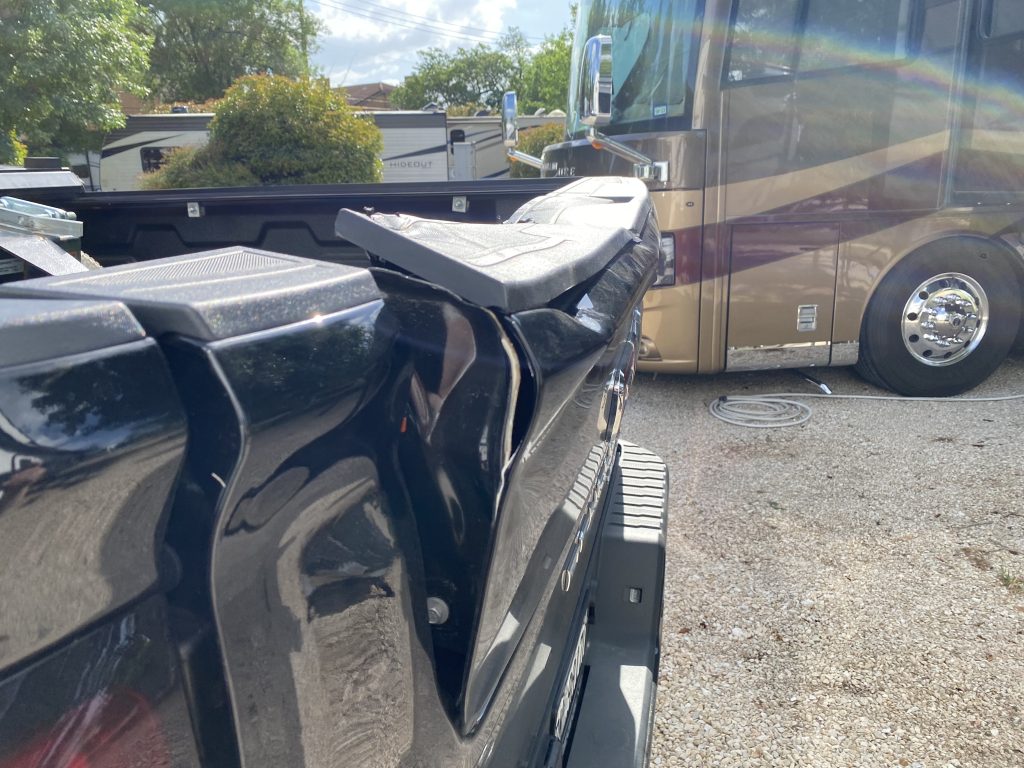
2. Rewiring Your Brain
Our human brains are complex, powerful machines. They are constantly working hard to make sense of the world around us – to organize and create structure out of vast amounts of information. Overall, this is incredibly useful. It is also important to our safety and security. When combined with cultural norms and structures, the result is a clear and predictable view of how the world works. Sounds good, right? Except that sometimes, somewhere along the way, we forget that almost everything we know about the world we operate in are human-created constructs. This structure stops being useful when those constructs start to become limitations.
The antidote is both simple and difficult at the same time – question everything. We can teach our brains to break free of finite thinking by learning to identify our hard-wired, underlying assumptions and challenge our brains to look at things from a different angle. Here’s an example: a common construct is that work needs to look a certain way. You apply for and secure a job, commute to an office or another common workplace, are rewarded with a salary and perhaps 3-4 weeks of vacation a year, and work until retirement around age 60 if you’re lucky. This is just what people do. But there’s power in recognizing that that’s just one approach. Underneath it all is a problem you are trying to solve. Why do we do this? Well, you need to provide food and shelter for you and your family, and you need some sense of purpose. Can it be done a different way? What if you want more than 3-4 weeks of vacation a year? What if you want to work from anywhere in the world? What if you don’t want limitations on how much you make? What if you don’t want to wait until retirement to have more time for your interests? These things may not be easy, but they are all possible. They are simply problems waiting to be solved, as long as we’re creative enough to come up with a solution.
Here are some other examples of topics you can dig into when practicing how to break down hard-wired assumptions: What life is all about. How you’re supposed to do life. Disconnecting your identity from your job title. What work looks like. What retirement looks like.
This kind of growth/infinite mindset thinking takes practice, but it can help to uncover limitations that are getting in your way. It is both powerful and freeing to see the world from a new perspective.

3. Finding Freedom
The Fulfillment Equation was born from two significant realizations I had around the time that I turned forty. The first was the awareness that I was spending almost all my time engaged in things that felt like “have to dos” with the promise that if I could just get through them then there would be time and space for “want to dos” at some point in the future. It was a never-ending schedule and checklist that almost never produced the open space I was yearning for. Even if by some chance the time came for a “want to do”, I was usually so exhausted and disconnected from what it is I was wanting to do that the opportunity would pass without feeling like I had the chance to fill my cup. This led to the second realization which was the clarity that time is my most precious asset. Once I began to appreciate the tremendous value I would put on every hour of my time, it became easier to evaluate whether the things I was doing with my time were worthy. The pursuit of “time freedom” had begun.
At the same time, the identification of other, related types of freedoms worthy of pursuit emerged. For example, one of the most direct ways to free up time is to create financial freedom. To be clear, this does not need to mean that you’ve won the lottery and have millions of dollars in the bank. There are lots of strategies to pursue financial independence, but it often requires rewiring your brain to think differently about what you really need, how you generate income and how you approach spending.
Another example is location freedom – figuring out how to work, school our kids and live fully remotely so that we are free to travel. Related to this is simplicity, or what I like to refer to as “freedom from stuff”. It’s hard to find freedom in the other areas if you are constantly bogged down with the expenses, maintenance and ownership responsibilities of belongings. Simplicity can also mean identifying things in your life that are overly complex and working to make them more streamlined and less onerous. It’s the philosophy that less is more and the practice to eliminate the noise by simplifying down to the important few.
When you start directing your problem-solving skills into the relentless pursuit of freedom – whether for time, money, location or simplicity – it is amazing what solutions you can design.
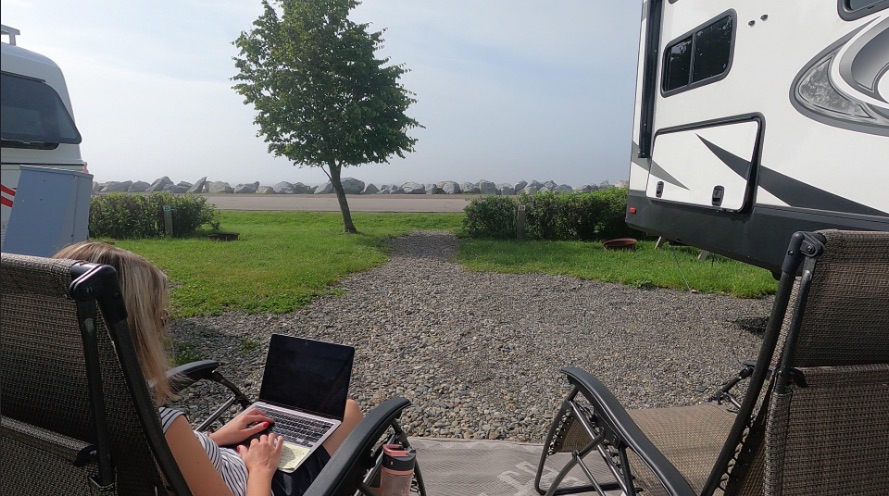
4. Chasing Adventure
We are born curious, adventurous, creative and intuitive. Maybe some more than others, but we all start out with a healthy dose of it. Over time, we can nurture and grow these skills or they can fade and be relegated to the back seat of our cognitive processing. For me, too much time spent in corporate, perform-and-please environments caused my thinking to narrow and become more finite, rather than foster and grow these traits. As a result, I’ve had to re-learn and re-embrace a sense of adventure. This means being intentional about trying new things, visiting new places, getting to know new people and being open-minded to new or different ideas.
Travel has been a big part of pursuing more adventure in our lives. With that said, rediscovering a sense of adventure has been more of a mindset shift and a conscious commitment, rather than a list of places we’ve visited. It involves training your brain to look for adventure opportunities in your day-to-day life and then act on them. There is a close link between a sense of adventure and the feelings of wonder, curiosity and fun – all of which are important for building fulfillment.

5. Embracing Feeling & Intuition
Increasingly, our world is built on information, evidence-informed decision making, performance metrics, analytics and data-driven insights. At least half of us by nature default to thinking logically and analytically. We encourage our kids to pursue STEM (science, technology, engineering and math) interests and celebrate their achievements in these areas. All of these things are valuable and important. It’s great stuff!
However, of equal importance is the development of skills and awareness around embracing feeling and intuition. This is in some ways harder to do because it is a less tangible, technical skill to teach. We have it inside of us, but it often goes overlooked and unpracticed. There is an important duality here though – one that recognizes that neither art without science nor science without art is as incredible as when science and art combine harmoniously together. I’ve had to teach myself not to dismiss my own “gut checks” and instincts. It’s so easy to minimize the driving power behind things like faith and belief. I anticipate it’s hard to take these things seriously because they can sometimes seem like magic. Yet time and time again, life reminds me of how powerful listening to my instincts can be and how often they are right!
It’s also incredible to me how richer life can be when we understand and identify feelings from a more complex palate of options. It’s like the difference between seeing the world coloured by a child wielding three jumbo crayons and seeing the world coloured by an experienced artist intricately using a set of 100 precisely-sharpened pencil crayons. For me, the secret to beginning to recognize all of the different feelings has been to slow down and get curious about what I’m experiencing. It has also helped to build the language to name what I’m feeling. At the end of the day, embracing feelings and intuition can be a really powerful tool along your fulfillment journey.
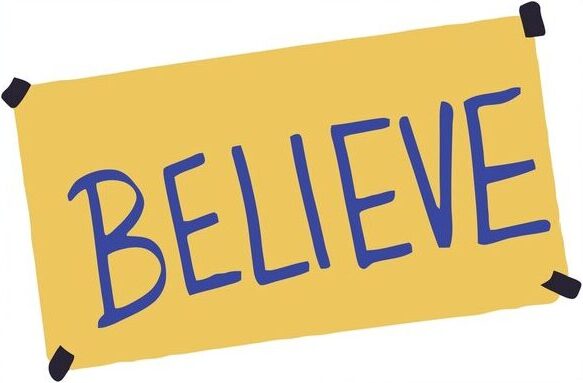
6. Engaging in Creativity & Solitude
A few years ago, once I’d started to get curious about what I was feeling, I began to uncover what felt like a place of emptiness in one corner of my being. It took awhile to figure out, but eventually I was able to isolate what was missing…it was creativity! Similar to curiosity and intuition, we are born with a healthy dose of creativity. When we’re kids this is celebrated and fostered. As we get older, the structures and responsibilities pile up and there often seems to be less space for creative play. As an adult, I would listen to other’s music, read other’s books, admire other’s art, hear other’s jokes, eat other’s recipes – but I was almost never creating something myself. I yearned to make something that I could put out into the world and share with others. Or even something I could create and keep for myself.
Part of making space for creativity has been in appreciating the importance of quiet and nature. This involves finding ways to eliminate the noise of a hectic life. Going for a walk in the forest, sitting and overlooking water, watching the birds – these are all ways of connecting with nature, which has a calming effect on us. Meditation and exercise can have a similar effect. It helps open the mind and invite inspiration in. It allows us to hear our own thoughts and connect with our imagination. It lets the creative juices flow!
7. Pursuing Purpose
A sense of purpose is fundamental to finding fulfillment. It doesn’t need to be grandiose and world-changing, but it does need to provide you with the motivation to work towards something that’s both personally meaningful and impactful to others. Your purpose can change over time with different stages of your life journey.
Purpose is often closely tied to contribution. Finding ways to give back through your work or through volunteering can directly feed into your sense of fulfillment. In fact, if you want a quick way to get out of your own head, try doing something nice for someone else.
For me, this has been the hardest of the foundational concepts to get a handle on. I have had to build strong practices with the other concepts and strip down what I commit to in order to find clarity on what is most meaningful to me and how I can best contribute. There is a strong relationship between purpose and identity, which I’m interested in exploring. So, more to come on this one!
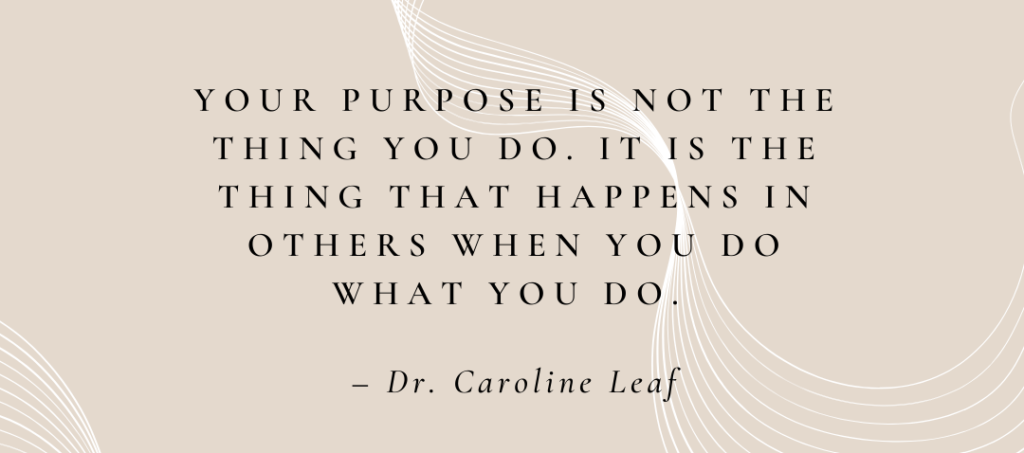
8. Staying Healthy
When our health is impacted, it becomes much more difficult to create the space for all the other things we’ve talked about. So, above all else, staying as healthy as we can given our own circumstances is the most foundational of all these foundation concepts! This means staying physically healthy with exercise, healthy eating and drinking lots of water. It also means staying mentally healthy with strong relationships, self-care and a daily gratitude practice.
This can all be easier said than done. We know we should do all these things, but they take time and effort. And as important as these things are, they can make us feel less fulfilled if they become onerous, exhausting chores. Just another thing to add to the list of things we can’t seem to find time for in the day! For this reason, I have found my own ability to focus on my health is closely tied to my efforts around finding freedom. When I recognize that time is my most precious asset and pursue “time freedom”, all of a sudden there is more space for staying healthy.
It’s also been helpful to explore what kinds of healthy activities you enjoy most (or detest least!). This will differ from person to person. For example, with exercise there are so many options – you can work out in a gym, take a dance class, go for a walk or run, join a hockey league, go swimming, do yoga – the possibilities are endless. Do you like being active with others or alone? Inside or outside? Competitive with others or yourself? The point is that you explore your experience of the options and connect with those that bring you the most joy.
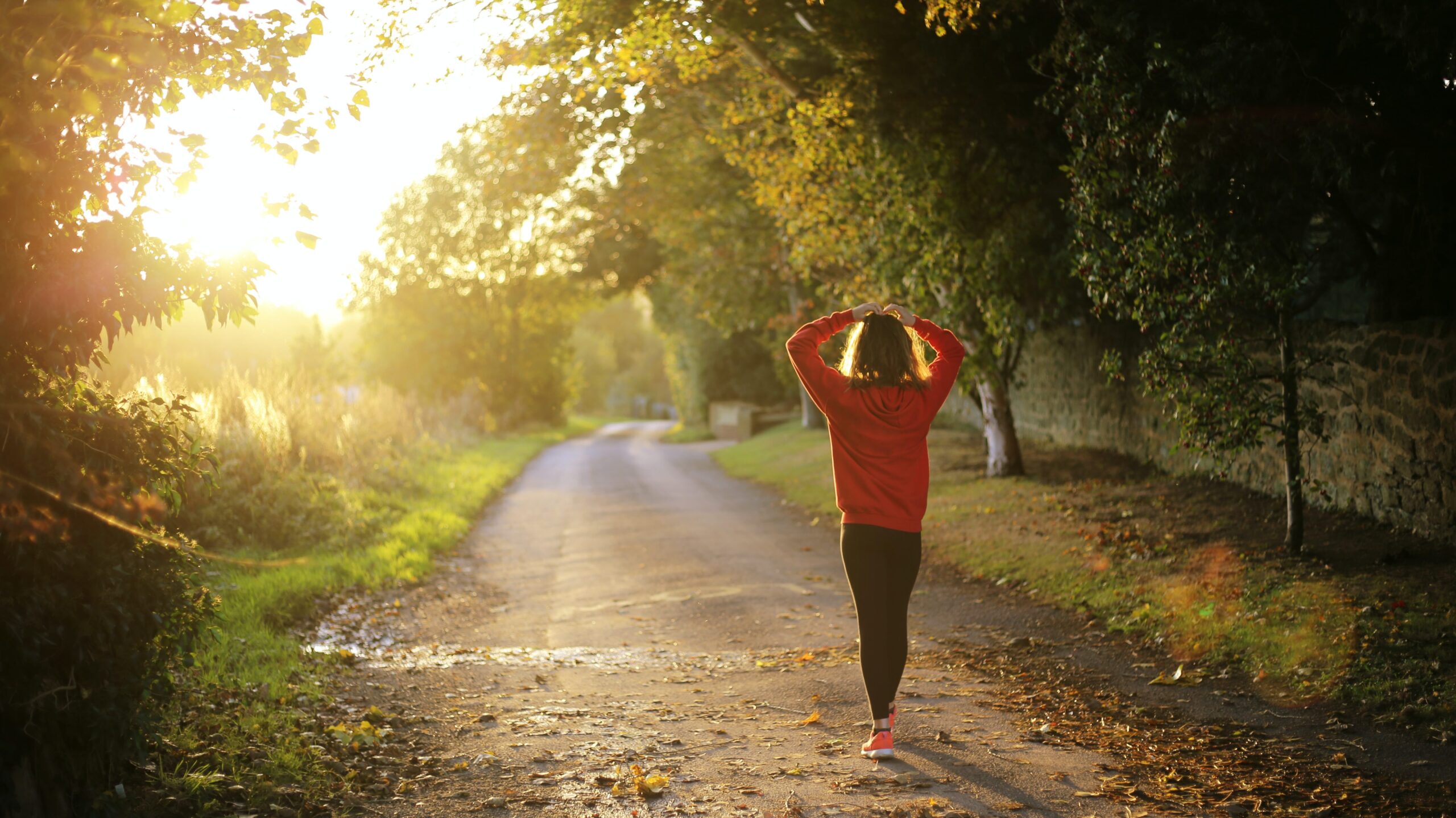
The Fulfillment Equation is a journey to create your best life through a focus on freedom, purpose and experiences. Embracing these foundations is fundamental for setting you up for your own success. These are the core concepts and practices that are essential for wholesome and fulfilling living. Consider them the solid base as we explore how to develop your own unique equation and personal strategy in the resources to come!

